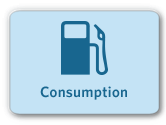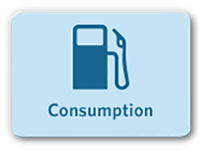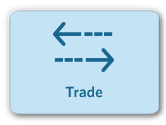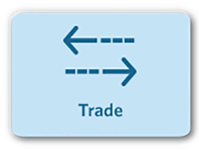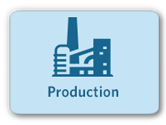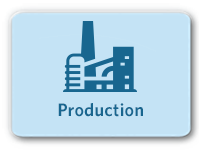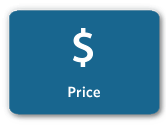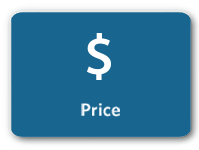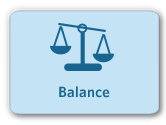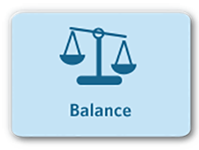What drives petroleum product prices: Prices and Crack Spreads
Gasoline is the most widely used petroleum product in the United States. Although gasoline is traded globally
and priced at various locations around the world, all these prices tend to move together in the long run because
gasoline can be transported between markets, thereby linking their supply and prices. Differences in absolute
price levels as well as short-term price changes across the world reflect varying gasoline specifications,
refinery maintenance schedules, unplanned refinery outages, transportation constraints, peak consumption
seasons, as well as regional inventory levels.
Gasoline spot prices in different regions of the world generally move together
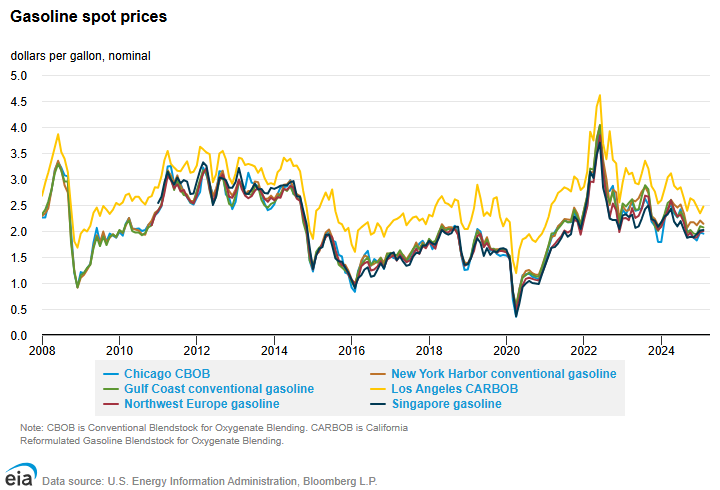
Updated: Monthly | Last Updated: 03/31/2024
Distillate is also traded globally and priced in various regions around the world. Like the disparity in
gasoline prices, the disparity in distillate prices primarily reflects differences in quality, primary uses,
seasonal consumption, and local market factors.
Distillate spot prices in different regions of the world generally move together
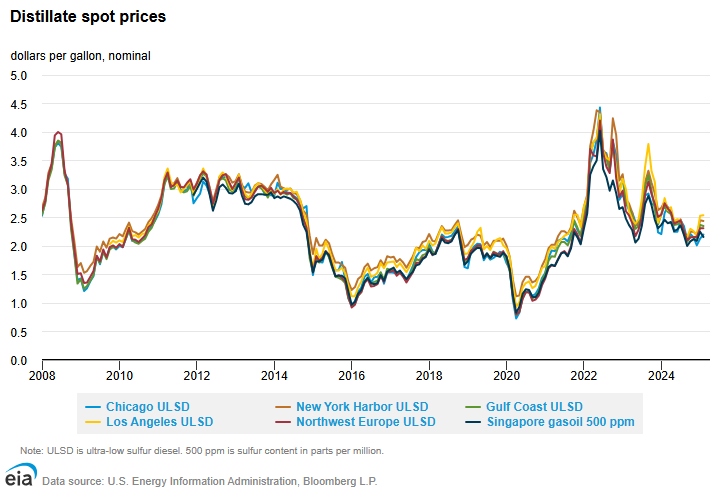
Updated: Monthly | Last Updated: 03/31/2024
In addition to trading physical quantities of petroleum products, market participants can also use futures
contracts to buy or sell gasoline and distillate for future delivery, or to hedge or speculate on future price
movements. Since 2006, the underlying commodity for the gasoline futures contract has been reformulated
blendstock for oxygenate blending (RBOB), the petroleum component of gasoline in many areas of the country prior
to the addition of ethanol to produce finished gasoline.
Since the spring of 2013, the underlying commodity for the distillate futures contract has been ultra-low
sulfur diesel (ULSD), a distillate with sulfur content of less than 15 parts per million (ppm). Prior to this
change, the underlying commodity for the distillate futures contract was allowed to have sulfur content up to
2,000 ppm, reflecting the type of distillate commonly used for home heating purposes.
Gasoline contracts traded in futures markets use RBOB as the underlying commodity
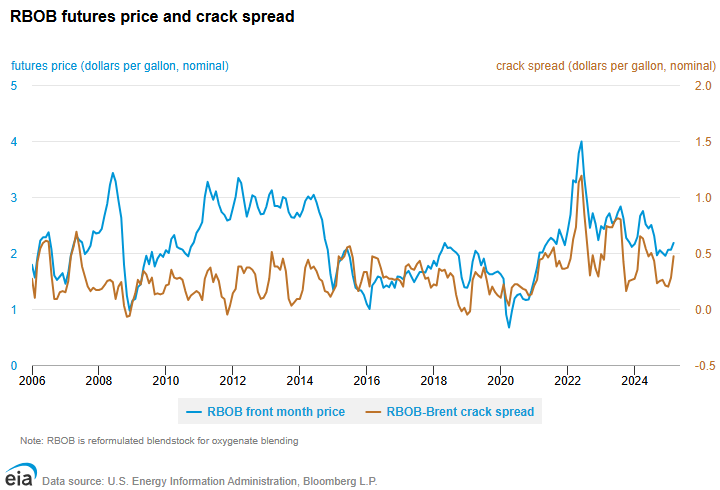
Updated: Monthly | Last Updated: 03/31/2024
Crack spreads, which represent the price
difference between products and crude oil, can be used to determine the relative value of various petroleum
products for refineries to produce. Crack spreads vary by product and can rise or fall depending on the time of
year and on market conditions.
Since 2013, distillate contracts traded in futures markets use ULSD as the underlying
commodity
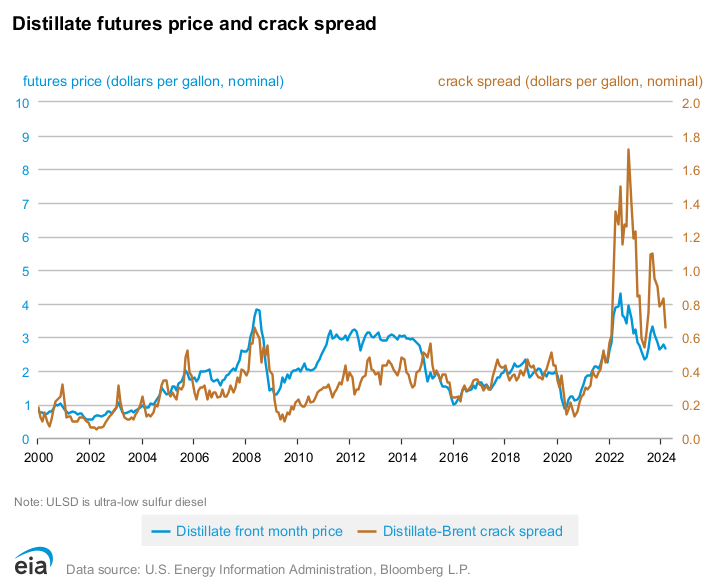
Updated: Monthly | Last Updated: 03/31/2024
Seasonality
Petroleum product crack spreads often exhibit seasonality. During the summer months, the underlying commodity of
the RBOB front month contract is required to be gasoline with a lower Reid vapor pressure (RVP) specification, a
more expensive type of gasoline to refine. Starting March 1, RBOB futures prices tend to increase several cents
from February averages to reflect the higher valued commodity. This, in turn, is reflected in a higher crack
spread. The crack spread continues to remain fairly high through the late spring and into the summer months as the
U.S. driving season picks up, resulting in higher domestic demand for the product. On September 1, the underlying
commodity of the RBOB front month contract reverts back to a higher RVP specification, representing a lower-cost
gasoline. The gasoline crack spread declines to reflect the lower price of gasoline.
The value of gasoline exhibits seasonality due to increased consumption and changes in
specifications during the summer
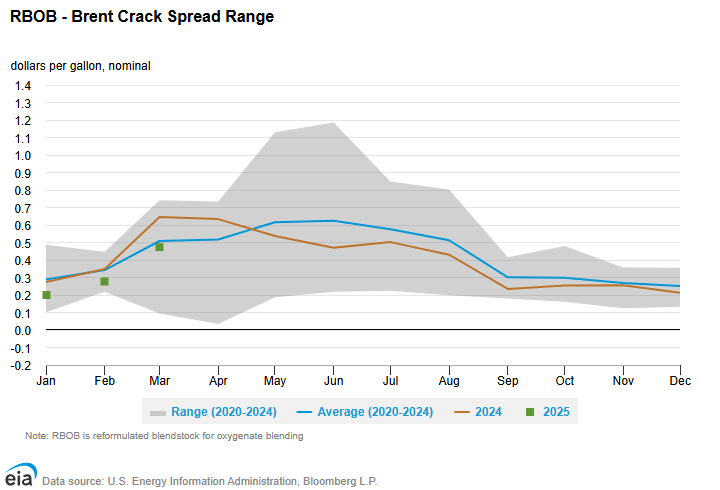
Updated: Monthly | Last Updated: 03/31/2024
As domestic gasoline consumption declines during the winter months, distillate consumption historically rises as
consumers in the United States, particularly in the U.S. northeast, use distillate for heating purposes. With the
increased demand, distillate crack spreads are usually highest from October to February.
The value of distillate exhibits seasonality due to increased domestic consumption in the
winter months
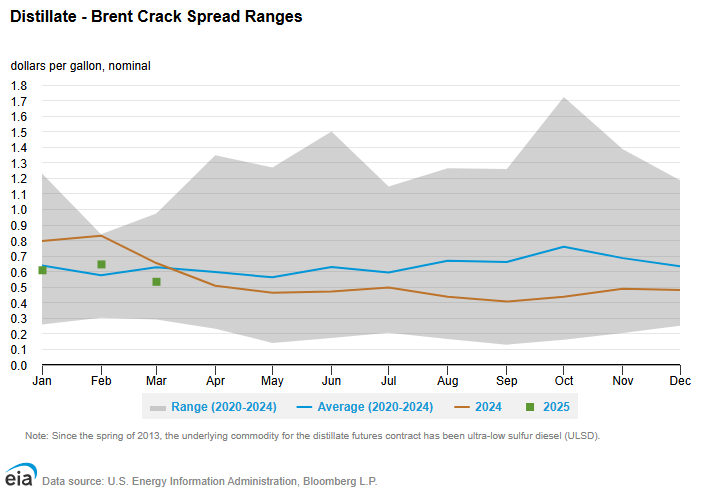
Updated: Monthly | Last Updated: 03/31/2024




